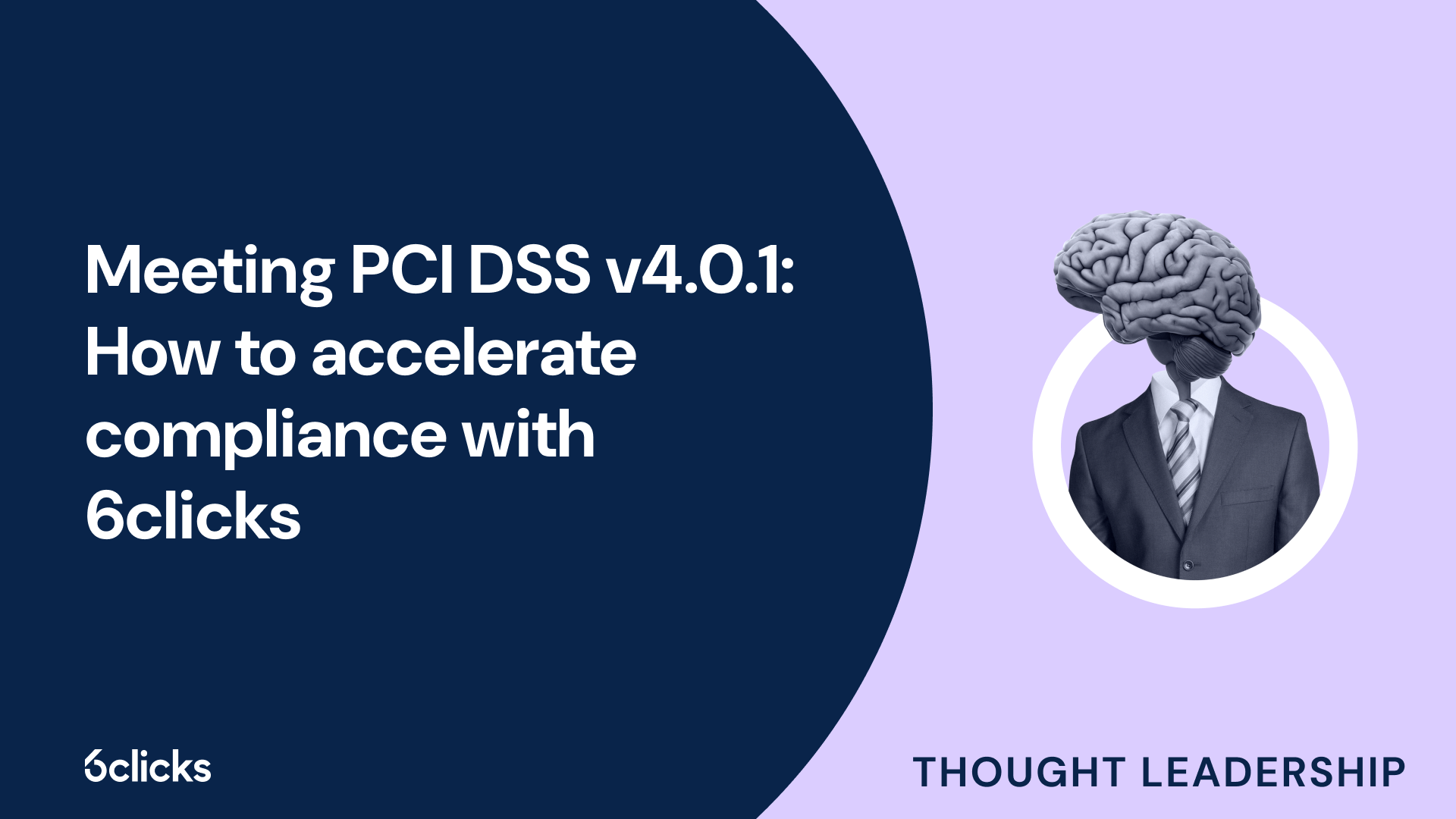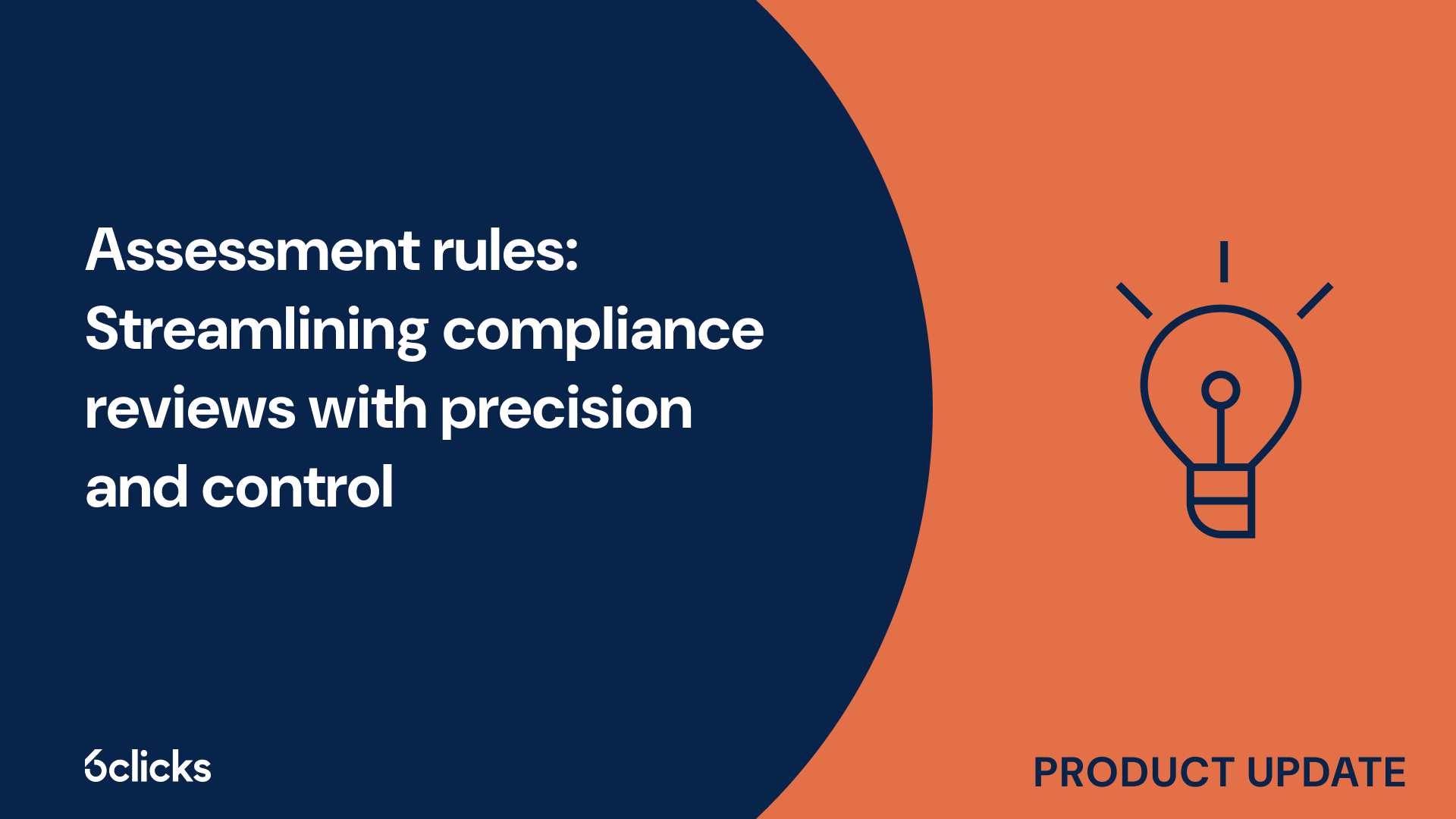Cyber resilience in 2025: Your smart guide to NIST CSF
Boost your organization's cyber resilience with this expert guide to the NIST Cybersecurity Framework. Learn to assess risk, improve security posture, and automate compliance with AI-powered tools.
-1.png?width=200&height=249&name=Group%20193%20(1)-1.png)
Cyber resilience in 2025: Your smart guide to NIST CSF
What is NIST 800-53?
NIST 800-53 is a set of security controls and guidelines developed by the National Institute of Standards and Technology (NIST) in the United States. It is widely used by federal agencies and other organizations to enhance the security of their information systems and protect sensitive data from unauthorized access and cyber threats. NIST 800-53 provides a comprehensive catalog of control families and specific security controls that can be implemented to mitigate risks and safeguard federal information systems. These controls cover a wide range of areas including access control, risk assessment, incident response, and privacy protection. By using NIST 800-53 controls as a baseline, federal government agencies can establish a consistent and effective approach to risk management, ensuring that their cybersecurity posture aligns with industry standards and regulatory requirements. Additionally, NIST 800-53 provides guidance on contingency planning, supply chain risk management, and handling security incidents in the event of natural disasters or hostile attacks. Through its control selection process and control enhancements, NIST 800-53 helps organizations address a variety of cybersecurity challenges, including insider threats, human error, and cyber-physical systems' vulnerabilities.
Uses of NIST 800-53
The NIST 800-53 framework serves as a comprehensive guide for federal agencies in securing their information systems. It helps these agencies establish security control baselines and implement effective risk management programs. By providing a catalog of controls and control families, NIST 800-53 aids in the selection process for appropriate security controls.
One of the key uses of the NIST 800-53 framework is its emphasis on addressing privacy controls. Federal agencies need to comply with privacy requirements and mitigate privacy risks. NIST 800-53 provides guidance on implementing privacy controls to protect sensitive information.
Access controls are crucial in preventing unauthorized access to federal information systems. NIST 800-53 offers a wide range of security controls and control enhancements that help federal agencies establish robust access controls. This is particularly important in mitigating insider threats and preventing human errors that may compromise sensitive information.
NIST 800-53 also helps federal agencies address security requirements to defend against hostile attacks. It provides guidance on implementing security controls to safeguard against cyber threats, ensuring the security objectives of federal organizations and protecting national security.
Overview of the control families
The NIST 800-53 framework provides federal agencies with a comprehensive set of security controls organized into convenient control families. These control families help streamline the implementation of security measures across federal information systems and promote consistency in managing security risks. The control families cover a wide range of security domains and address various aspects of information security, such as access controls, contingency planning, risk assessment, and supply chain risk management. By organizing the security controls into families, federal agencies can easily identify and select the appropriate controls based on their specific needs and requirements. This systematic approach to security control selection contributes to a more efficient and effective risk management process and supports federal agencies in their efforts to maintain a strong cybersecurity posture.
Access controls
Access controls are an essential component of the NIST 800-53, which provides guidelines and recommendations for securing federal information systems. The Access Control family within this framework focuses on controls for governing access to systems, networks, and devices.
There are different types of access control mechanisms that can be implemented to ensure secure access. Discretionary Access Controls (DAC) grant access rights based on the owner's discretion, allowing them to control access to their resources. Mandatory Access Controls (MAC) enforce access permissions based on predefined rules defined by the system administrator or security policy. Role-Based Access Control (RBAC) assigns access based on individuals' roles and responsibilities within an organization.
Implementing access policies, effective account management, and user privilege management are crucial in mitigating risks related to unapproved access. Access policies outline the rules and procedures governing access to sensitive resources, ensuring that only authorized individuals have access. Account management practices involve the creation, modification, and termination of user accounts, ensuring that access rights are correctly assigned and revoked as needed. User privilege management allows organizations to grant appropriate access privileges to individuals based on their roles and responsibilities, minimizing the risk of unauthorized actions.
By implementing robust access controls, federal agencies and organizations can protect their information systems from insider threats, human errors, and hostile attacks. These controls play a vital role in maintaining the confidentiality, integrity, and availability of sensitive information and ensuring compliance with regulatory requirements.
Awareness and training
Awareness and Training is a critical family of controls within the NIST 800-53 framework that focuses on improving user awareness of operational risks and threats to privacy and system security. This control family recognizes the vital role that well-trained and informed users play in protecting federal information systems against a wide range of cyber threats.
The Awareness and Training family requires federal agencies to develop and implement comprehensive cybersecurity training programs for their personnel. These programs are designed to educate employees about the importance of safeguarding sensitive information, understanding potential risks, and following best practices for system security.
Creating effective training policies is an essential aspect of this control family. These policies outline the requirements and expectations for cybersecurity training within the organization. They establish clear guidelines for employee participation in training programs and help ensure consistent and comprehensive training across the agency.
Additionally, this control family emphasizes the importance of keeping records of training activities. These records serve as evidence of compliance with training requirements and can also help identify and address any gaps or areas for improvement in the organization's approach to cybersecurity training.
To continuously improve the effectiveness of the training program, feedback from employees and trainers is crucial. Organizations should regularly seek input from participants to evaluate the training's quality, relevance, and overall impact. This feedback can inform updates to training materials, methodologies, and delivery formats, ensuring that the organization's cybersecurity training remains up-to-date and aligned with evolving threats.
By prioritizing user awareness and providing comprehensive cybersecurity training, federal agencies can strengthen their security posture, reduce the risk of insider threats, and enhance protection against malicious activities.
Audit and accountability
The Audit and Accountability control family within NIST 800-53 is essential for federal agencies to effectively monitor and review the usage of their information systems. This control family primarily focuses on event logging, auditing procedures, log storage capacity, log monitoring and review, and ensuring accountability.
Event logging involves the recording of activities and events within an information system. This includes user actions, system changes, and security incidents. By implementing comprehensive event logging, agencies can create a detailed record of all activities occurring within their systems.
Monitoring and reviewing logs is a crucial step in maintaining the security of federal information systems. It involves regularly analyzing the recorded events to identify any unusual or suspicious activities that may indicate a breach or system issue. By regularly monitoring and reviewing logs, agencies can detect potential insider threats, unauthorized access attempts, or any other security incidents.
Log audits are vital in identifying breaches or system issues. Auditing procedures involve assessing the logs to verify compliance with security policies and to ensure that security controls are effective and properly implemented. Log audits help agencies identify any violations, human errors, or configuration changes that may have occurred. They also provide insights into the effectiveness of security controls and help improve risk management strategies.
By focusing on event logging, auditing procedures, log monitoring and review, and ensuring accountability, the Audit and Accountability control family enables federal agencies to maintain a robust cybersecurity posture and protect their sensitive information from potential cyber threats.
Configuration management
Configuration management is a critical component of NIST 800-53, which is used by federal agencies to establish and maintain the security of their information systems. It involves the systematic management of system configurations, inventories of information system components, and security impact analysis.
Policies for system configurations are developed to ensure that information systems are securely configured and maintained. These policies define the required security controls, configuration settings, and operational procedures that must be implemented to protect the confidentiality, integrity, and availability of federal information systems.
Inventories of information system components are maintained to track and manage all hardware, software, and firmware components within an agency's information systems. This helps agencies identify vulnerabilities, monitor changes, and ensure that adequate security controls are in place.
Security impact analysis is a process that assesses the potential impact of changes to information system configurations. It helps agencies anticipate and mitigate any adverse effects that modifications may have on the security and privacy of their systems. This analysis is essential for maintaining the effectiveness of security controls and minimizing security risks.
Baseline configurations play a crucial role in establishing a strong foundation for future builds or changes. They provide a standardized set of security and privacy control implementations, operational procedures, system components, network topology, and logical placement. By starting with a secure and well-defined baseline, agencies can ensure that their systems meet the necessary security requirements and are protected against a wide range of cyber threats.
Identification and authentication
Identification and authentication are essential components of NIST 800-53 controls, as they play a critical role in ensuring the security and integrity of federal information systems. These controls focus on establishing and verifying the identity of both organizational and non-organizational users accessing these systems.
Within the NIST 800-53 control family, there are specific controls that strengthen user management policies and reduce the risk of unauthorized access. These controls include:
- IA-2: Identification and Authentication (Organizational Users) - This control specifies the requirements for verifying the identity of organizational users before granting them access to federal information systems. It ensures that only authorized individuals can access sensitive data and resources.
- IA-3: Device Identification and Authentication - This control emphasizes the need for devices connecting to federal information systems to be identified and authenticated. It helps prevent unauthorized devices from accessing network resources.
- IA-8: Identification and Authentication (Non-Organizational Users) - This control focuses on the identification and authentication processes for non-organizational users, such as contractors or external partners. It ensures that these users are appropriately identified and verified before being granted access to federal information systems.
By implementing these controls, agencies can establish robust user management policies that significantly reduce the risk of unauthorized access. This helps protect sensitive information from being compromised by malicious actors or insider threats. Identification and authentication controls are crucial for maintaining a strong cybersecurity posture and safeguarding sensitive data from unauthorized disclosure, modification, or destruction.
Incident response
The NIST 800-53 Incident Response control family is vital for federal agencies and organizations to effectively respond to and mitigate cybersecurity incidents. It consists of several key elements that contribute to a robust incident response strategy.
Firstly, policies and procedures are established to define the roles, responsibilities, and actions to be taken during an incident. These policies outline the step-by-step process for detecting, analyzing, and responding to incidents promptly.
Training is crucial to ensure that personnel are equipped with the necessary skills to handle incidents effectively. Regular training sessions help employees understand their roles and responsibilities, how to identify and report incidents, and the appropriate steps to take during an incident.
Testing is conducted to evaluate the effectiveness of the incident response plan and identify any gaps or weaknesses. Regular exercises simulate real-world scenarios, enabling organizations to practice their response capabilities and refine their processes.
Monitoring plays a vital role in incident response by continuously monitoring systems and networks for signs of intrusion or malicious activity. This proactive approach enables organizations to detect incidents early and respond promptly to limit the potential impact.
Reporting is another critical element. Incidents should be reported promptly to appropriate stakeholders, including management, legal teams, and law enforcement agencies, as required. Timely reporting allows for swift action to contain the incident and initiate the necessary investigations.
Lastly, a comprehensive response plan outlines the orchestrated actions to be taken during an incident. This plan encompasses all necessary steps, including containment, eradication, recovery, and post-incident analysis. It ensures that incidents are handled systematically, minimizing the potential damage and facilitating a swift return to normal operations.
Organizations may face various types of incidents, including data breaches, supply chain breakdowns, public relations damage, and attacks involving malicious code. To effectively respond to these incidents, a well-defined incident response strategy is essential, encompassing the aforementioned key elements.
Maintenance
The Maintenance family of controls in NIST 800-53 is essential for federal agencies and organizations operating federal information systems. Its purpose is to ensure the reliability, performance, and integrity of organizational systems through effective system maintenance practices.
These controls encompass several requirements that organizations must adhere to in order to maintain their systems effectively. This includes creating and implementing a system maintenance policy, identifying and managing maintenance personnel, and establishing processes for maintaining system software and firmware.
One key requirement within the Maintenance family is the regular application of software updates and patches. This helps to address vulnerabilities and ensure that systems are protected against known threats. By staying up to date with the latest patches and updates, organizations can significantly lower the risk of unauthorized access or exploitation of system weaknesses.
Additionally, these controls emphasize the importance of configuration management, including tracking and documenting system hardware and software configurations. This helps to prevent unauthorized changes that could lead to operational outages or compromise the integrity of the system.
By implementing and following the Maintenance family of controls, organizations can effectively manage their system maintenance activities. This contributes to lowering the risk of operational outages, unauthorized changes to system configurations, and potential security incidents. Overall, the Maintenance controls help maintain the reliability, performance, and security of federal information systems.
Media protection
The Media Protection control family in NIST 800-53 is designed to safeguard physical media and lower the risk of information breaches and leaks. It focuses on implementing controls to protect and secure physical media used within federal agencies and federal information systems.
Specific controls within the Media Protection family include access controls, which govern who has access to the physical media and under what circumstances. Access controls may include measures such as requiring identification badges, implementing biometric authentication, and having restricted physical access to media storage areas.
Another important control within this family is the implementation of storage and transport policies. These policies define how physical media should be stored and transported to prevent unauthorized access or loss. It may include requirements for using secure containers, encryption during transit, and monitoring procedures.
Additionally, the Media Protection control family emphasizes the need for proper marking and labeling of physical media to ensure it is appropriately handled and tracked. This could involve using labels that indicate the sensitivity or classification level of the media.
Moreover, the control family includes requirements for the sanitization of media before disposal or reuse. This ensures that any sensitive or classified information is properly erased or destroyed to prevent unauthorized access.
Lastly, the family addresses the need for defined organizational media use policies. These policies outline the acceptable use of physical media within the organization and establish guidelines for its handling, sharing, and disposal.
By implementing these controls, federal government agencies can effectively protect and secure physical media, mitigating the risk of information breaches and leaks that could potentially compromise national security or the integrity of federal information systems.
Physical and environmental protection
The Physical and Environmental Protection control family within the NIST 800-53 framework is crucial in safeguarding an organization's physical assets and infrastructure from threats and vulnerabilities. This control family establishes measures and requirements to ensure the physical security of federal information systems and resources.
Specific controls within this family address physical access, monitoring, and responses to physical threats. For example, access controls regulate the entry and exit points of facilities to prevent unauthorized individuals from gaining physical access. It may involve the use of identification badges, biometric authentication, or restricted access areas.
Monitoring controls within this family ensure continuous surveillance of the physical environment, detecting and documenting security incidents. This includes the use of security cameras, intrusion detection systems, and alarm systems to monitor and record activities that could pose a threat to an organization's assets.
Furthermore, the control family outlines the proper response to physical threats, such as establishing an incident response plan and conducting regular drills. This ensures that the organization is prepared to handle emergencies effectively, minimize damage, and protect physical assets.
In combination with other control families, this control family contributes to the risk management framework. By implementing a comprehensive risk management program, organizations can identify and address physical threats, minimize vulnerabilities, and protect their physical assets and infrastructure.
Planning
The Planning family of controls in NIST 800-53 encompasses a set of measures aimed at guiding federal government agencies in effectively managing security and privacy risks within their information systems. This control family provides organizations with the necessary tools and strategies for robust security planning and incident management.
Key components of the Planning family include privacy and system security plans (SSPs), system architecture, and management processes. Privacy and system security plans outline the organization's approach to safeguarding sensitive information and define the security requirements specific to their systems. These plans help in identifying and implementing appropriate security controls and practices.
System architecture refers to the design and layout of the information system, including the identification of system boundaries, interfaces, and connections. It assists organizations in understanding the overall structure of their system and ensuring that security controls are effectively implemented.
Management processes outlined in this control family cover activities such as risk assessments, security training, configuration management, and vulnerability assessments. These processes help organizations in establishing a strong security posture by continuously monitoring, assessing, and addressing potential vulnerabilities and risks.
Contingency planning is another crucial aspect of the Planning family. It involves developing strategies to mitigate the impact of system failures, breaches, or downtime. Organizations are required to identify alternative processing or storage sites and establish plans for rapid recovery and resumption of normal operations.
By implementing the controls within the Planning family, organizations can enhance their security planning and response capabilities. These controls aid in identifying and mitigating security risks, minimizing the impact of system failures or breaches, and ensuring the continuity of operations during adverse events.
Risk Assessment
Risk assessment plays a crucial role in NIST 800-53 compliance, as it helps federal agencies and organizations identify and mitigate cybersecurity risks associated with their information systems. The purpose of conducting a risk assessment is to systematically evaluate potential vulnerabilities and threats that could harm the confidentiality, integrity, and availability of sensitive information.
Within the Risk Assessment family, there are specific controls that focus on assessing vulnerabilities and conducting regular scans to identify potential risks. These controls include:
1. RA-3 Risk Assessment:
This control requires organizations to develop and implement a formal process to assess the cybersecurity risk to their information systems. By conducting risk assessments, organizations can identify vulnerabilities and assess the likelihood and potential impact of threats.
2. RA-5 Vulnerability Scanning:
This control requires organizations to regularly conduct vulnerability scans to identify any weaknesses or vulnerabilities in their systems. Vulnerability monitoring tools are used to automate this process, allowing organizations to proactively detect and address potential risks.
By implementing these controls, organizations can gain insights into the potential risks they face, prioritize their security efforts, and take appropriate measures to mitigate vulnerabilities. Regular risk assessments and vulnerability scans are essential in maintaining a strong cybersecurity posture and ensuring the protection of sensitive information from a wide range of cyber threats.
Security assessment
The Security Assessment control family within NIST 800-53 provides a comprehensive approach to identifying and managing security risks within federal information systems. This control family is crucial for federal agencies and organizations in safeguarding their information systems against potential threats and vulnerabilities.
The Security Assessment control family consists of controls that focus on conducting security assessments, authorizations, continuous monitoring, and ongoing security improvements. These controls play a vital role in managing and mitigating risks effectively.
Security assessments are a fundamental part of the control family as they help organizations identify and analyze potential vulnerabilities and threats to their information systems. By conducting regular assessments, organizations can proactively detect and address potential risks before they are exploited by malicious actors.
Authorizations ensure that information systems are authorized to operate and are in compliance with security requirements. This process involves thoroughly evaluating the system's security controls and documenting the results to ensure that it meets the necessary standards.
Continuous monitoring is an essential aspect of the Security Assessment control family. It involves regularly monitoring the security controls and systems in place to identify potential gaps or weaknesses. By continuously assessing the effectiveness of controls, organizations can detect and respond to security incidents promptly.
Ongoing security improvements refer to the practice of consistently enhancing security controls and measures based on the results of security assessments and continuous monitoring. This iterative process allows organizations to adapt and improve their cybersecurity posture over time.







